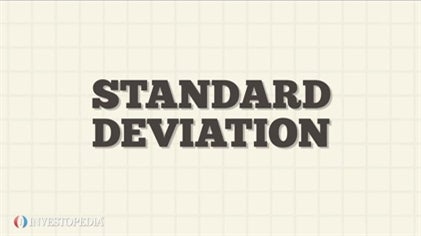A swap, in financing, is a contract in between 2 counterparties to exchange monetary instruments or cashflows or payments for a specific time. The instruments can be almost anything however many swaps involve money based on a notional principal quantity. The basic swap can likewise be seen as a series of forward agreements through which two parties exchange monetary instruments, leading to a typical series of exchange dates and two streams of instruments, the legs of the swap. The legs can be practically anything however normally one leg includes capital based on a notional principal amount that both celebrations consent to.
In practice one leg is generally fixed while the other varies, that is figured out by an uncertain variable such as a benchmark rate of interest, a foreign exchange rate, an index cost, or a commodity cost. Swaps are mainly non-prescription contracts between companies or monetary organizations (Which of the following was eliminated as a result of 2002 campaign finance reforms?). Retail financiers do not typically engage in swaps. A home loan holder is paying a floating rate of interest on their home loan however expects this rate to go up in the future. Another mortgage holder is paying a set rate but anticipates rates to fall in the future. They enter a fixed-for-floating swap arrangement. Both home loan holders settle on a notional principal amount and maturity date and concur to take on each other's payment responsibilities.
By using a swap, both celebrations effectively altered their home mortgage terms to their favored interest mode while neither party needed to renegotiate terms with their home loan lenders. Considering the next payment just, both celebrations might also have gone into a fixed-for-floating forward contract. For the payment after that another forward agreement whose terms are the very same, i. e. very same notional quantity and fixed-for-floating, and so on. The swap contract therefore, can be viewed as a series of forward agreements. In the end there are 2 streams of cash streams, one from the party who is always paying a fixed interest on the notional quantity, the set leg of the swap, the other from the celebration who agreed to pay the drifting rate, the drifting leg.
Swaps were first presented to the public in 1981 when IBM and the World Bank gotten in into a swap contract. Today, swaps are amongst the most greatly traded financial agreements on the planet: the overall quantity of rate of interest and currency swaps impressive was more than $348 trillion in 2010, according to Bank for International Settlements (BIS). Many swaps are traded non-prescription( OTC), "custom-made" for the counterparties. The Dodd-Frank Act in 2010, nevertheless, envisions a multilateral platform for swap pricing quote, the swaps execution facility (SEF), and requireds that swaps be reported to and cleared through exchanges or clearing homes which consequently caused the formation of swap information repositories (SDRs), a central facility for swap data reporting and recordkeeping.
futures market, and the Chicago Board Options Exchange, registered to end up being SDRs. They started to note some kinds of swaps, swaptions and swap futures on their platforms. Other exchanges followed, such as the Intercontinental, Exchange and Frankfurt-based Eurex AG. According to the 2018 SEF Market Share Data Bloomberg dominates the credit rate market with 80% share, TP dominates the FX dealership to dealership market (46% share), Reuters dominates the FX dealership to client market (50% share), Tradeweb is strongest in the vanilla rate of interest market (38% share), TP the most significant platform in the basis swap market (53% share), BGC controls both the swaption and XCS markets, Tradition is the most significant platform for Caps and Floorings (55% share).
At the end of 2006, this was USD 415. 2 trillion, more than 8. 5 times the 2006 gross world product. Nevertheless, because the cash circulation produced by a swap is equivalent to an interest rate times that notional amount, the capital generated from swaps is a substantial portion of however much less than the gross world productwhich is likewise a cash-flow step. Most of this (USD 292. 0 trillion) was because of interest rate swaps. These divided by currency as: Source: BIS Semiannual OTC derivatives stats at end-December 2019 Currency Notional impressive (in USD trillion) End 2000 End 2001 End 2002 End 2003 End 2004 End 2005 End 2006 16.
9 31. 5 44. 7 59. 3 81. 4 112. 1 13. 0 18. 9 23. 7 33. 4 44. 8 74. 4 97. 6 11. 1 10. 1 12. 8 17. 4 21. 5 25. 6 38. 0 4. 0 5. 0 6. 2 7. 9 11. 6 15. 1 22. 3 1. 1 https://www.tricksroad.com/2019/01/timeshare-travel-blogs-for-frequent-miller.html 1. 2 1. 5 2. 0 2. 7 3. 3 3. 5 Source: "The Global OTC Derivatives Market at end-December 2004", BIS, , "OTC Derivatives Market Activity in the Second Half of 2006", BIS, A Major Swap Participant (MSP, or often Swap Bank) is a generic term to explain a financial organization that assists in swaps between counterparties.
The Main Principles Of What Does Ltm Mean In Finance

A swap bank can be a global business bank, a financial investment bank, a merchant bank, or an independent operator. A swap bank acts as either a swap broker or swap dealership. As a broker, the swap bank matches counterparties however does not presume any danger of the swap. The swap broker gets a commission for this service. Today, many swap banks act as dealers or market makers. As a market maker, a swap bank wants to accept either side of a currency swap, and after that later on on-sell it, or match it with a counterparty. In this capacity, the swap bank assumes a https://www.linkandthink.org/why-should-agents-use-real-estate-crm/ position in the swap and for that reason presumes some threats.

The two main factors for a counterparty to use a currency swap are to acquire financial obligation financing in the swapped currency at an interest cost reduction caused through comparative advantages each counterparty has in its nationwide capital market, and/or the advantage of hedging long-run exchange rate exposure. These factors appear uncomplicated and hard to argue with, specifically to the level that name acknowledgment is really crucial in raising funds in the worldwide bond market. Firms using currency swaps have statistically higher levels of long-term foreign-denominated financial obligation than firms that use no currency derivatives. On the other hand, the primary users of currency swaps are non-financial, international firms with long-term foreign-currency funding needs.
Financing foreign-currency debt using domestic currency and a currency swap is therefore superior to financing directly with foreign-currency debt. The two main factors for swapping rates of interest are to better match maturities of possessions and liabilities and/or to obtain a cost savings by means of the quality spread differential (QSD). Empirical proof recommends that the spread between AAA-rated business paper (floating) and A-rated commercial is a little less than the spread between AAA-rated five-year commitment (fixed) and an A-rated obligation of the exact same tenor. These findings suggest that companies with lower (greater) credit rankings are more likely to pay fixed (drifting) in swaps, and fixed-rate payers would use more short-term debt and have much shorter debt maturity than floating-rate payers.